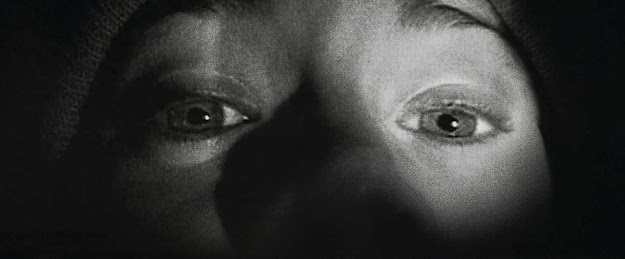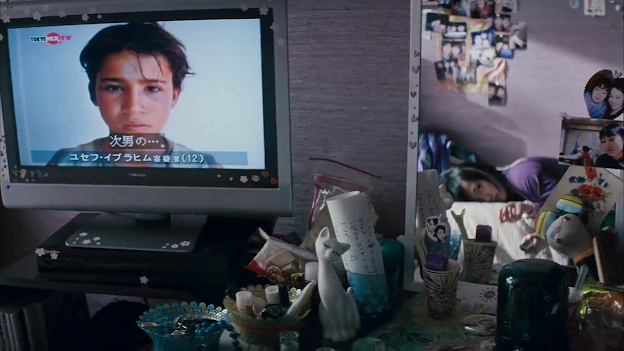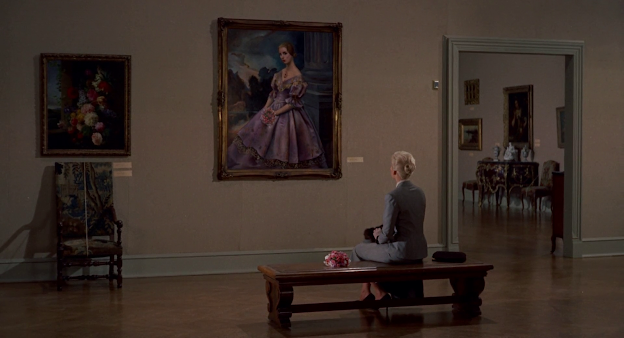Blog 7
The Blair Witch Project and Reality
Bazin mentions human beings long
lasting desire to prevent things from the death:” Thus, by providing a defense
against the passage of time it satisfied a basic psychological need in man, for
death is but the victory of time. To preserve, artificially, his bodily
appearance is to snatch it from the flow of time, to stow it away neatly, so to
speak, in the hold of life.” (p.159) This passion finds itself a place in
Heather’s head too. She has a serious belief on filmmaking’s power. We are
seeing that she is not leaving her camera even the most desperate and horrible
situations. In one specific scene when Josh is criticizing her about this behavior,
she explains herself and says: “It’s all I have left”.
https://youtu.be/rkoNw8kk_Ng?t=220
I think Heather understands the
camera’s power and sees it like an eternal object which can record everything
but never dies. Even if she is scared, she knows that camera has no emotions
and it is not questioning anything it just record events as it happens. At this
point, Bazin has quite important ideas about photography’s features: “For the
first time an image of the world is formed automatically, without the creative
intervention of man. The personality of the photographer enters into the
proceedings only in his selection of the object to be photographed and by way
of the purpose he has in mind.” (p. 161) The camera does not reflect Heather’s
emotional breakdowns and it makes her feel more powerful when she is using the
camera. And she is scared of death in the woods but she knows that if she
continue to record the events maybe someday, some people can find these recordings
and can explain their family or people how the events happened: “…all are
agreed that the image helps us to remember the subject and to preserve him from
a second spiritual death.” (p. 159)
Heather basically wants to be remembered and
even if she dies, she knows that she can still live inside this camera forever.
And their reality maybe helps other people and could protect them from the curse
of the Blair Witch. Bazin’s ideas like: “for photography does not create
eternity, as art does, it embalms time, rescuing it simply from its proper
corruption.” and “Viewed in this perspective, the cinema is objectivity in
time. The film is no longer content to preserve the object, enshrouded as it were
in an instant, as the bodies of insects are preserved intact, out of the
distant past, in amber.” (p.162) are supporting the ideas of Heather well.
Another specific scene which mentions “camera reality” in the movie is when mike starts to talk with Heather about filtered reality that camera has. (00:50:23-00:50:45) Mike basically says that the images that camera shoot is not quite reality but “filtered reality” that you can pretend differently from the real way of events happened. Basin says something similar with Mike: “The photographic image is the object itself, the object freed from the conditions of time and space that govern it. No matter how fuzzy, distorted, or discolored, no matter how lacking in documentary value the image may be, it shares, by virtue of the very process of its becoming, the being of the model of which it is the reproduction; it is the model.” (p. 162)
The use of camera and mise én
scene elements effects movie's documentary-like mood a lot. Camera is handheld so
the images are always shaking and vibrating. We are seeing just what camera
sees. So, the camera becomes like the fourth character in the story who is tracking
the other three characters all the time. Then the location- woods- becomes
another character in the movie with the all endless trees and dark. A dangerous,
unsafe environment takes the movie’s scary mood to another level. The acting of
the three main characters is also very realistic too. It helps the movie seems
like more documentary-like and real. And when the audience thinks that the
events looks real, they do not need to see some scary images to be scared.
Their imagination and putting themselves in the characters place, make them
feel more scared and increases the horror factor of the movie.
Bibliyography
Bazin, Andre. The Ontology of the Photographic Image. Leo Braudy & Marshall Cohen eds. Film Theory and Criticism 7th edition, New York: Oxford University Press, 2009.(p. 159-163)
Film link: https://720pizle.org/izle/altyazi/the-blair-witch-project.html





Yorumlar
Yorum Gönder